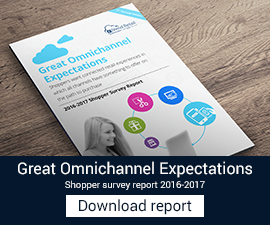
Just a few days remain until the Easter weekend – one of the biggest spikes in the retail calendar.
The Easter egg market alone is worth £365 million, while many consumers use the public holidays as a time to shop. In fact, according to Experian FootFall, European consumer activity often increases ahead of the weekend and continues into the week after, creating the potential for a two-week surge in spending.
This presents a fantastic opportunity for retail businesses to boost profits, however, it’s not without  its pitfalls. Namely, more shoppers equal busier stores, and therefore place a greater strain on operational resources.
its pitfalls. Namely, more shoppers equal busier stores, and therefore place a greater strain on operational resources.
Queuing is a particularly big challenge for retailers, who fear that long wait times will lead to shoppers abandoning their purchases.
To help you control the crowds this Easter weekend, we’ve put together 4 tips for reducing queue lengths during busy trading periods:
1. Predict when your store is likely to reach crisis point
As the saying goes, prevention is better than cure. Looking back over previous Easter periods, trading patterns can reveal vital details on when your store is likely to be busy, enabling you to put measures in place – such as increasing workforce – to ensure customer service standards are upheld.
A good retail business intelligence tool is essential for these insights. Although it won’t stop ebbs and flows in consumer traffic, it will prepare your business for the most intense stress moments.
2. Increase your payment points
Many retailers rely on one or two fixed points of sale, so waiting lines can quickly build up during busy moments. Mobile POS technology is a very effective tool for preventing this congestion, as retailers can quickly and easily open up an alternative point of payment when queues begin to lengthen.
Not only that, but the portable nature of mobile payment devices mean retail staff can use them at any point within the store – so shoppers don’t even have to join a queue to make their purchase.
3. Keep an eye on the queue
It’s very easy for a seemingly controlled situation to suddenly become very chaotic at peak trading times; queues can go from 2 or 3 people to 7-10 in the space of a few minutes.
Again, mobile Point of Sale systems can come in very useful here, as dedicated ‘queue buster’ staff can wander up and down the lines processing payment details to quickly get the queue back down to a manageable length.
4. Speed up transactions
Another factor compounding queue times is the length of each customer transaction. While there are a limited number of things you can do to make scanning and packing goods a speedier process, there are ways to decrease payment times.
Promoting contactless payments for low value purchases is a good example. Another is integrating loyalty schemes onto an application for consumers’ mobile phones, so they don’t have to spend minutes searching through their wallet to collect or redeem points.







 acknowledge its impact & importance since it has shown an inordinate effect in a short span of time.
acknowledge its impact & importance since it has shown an inordinate effect in a short span of time.






